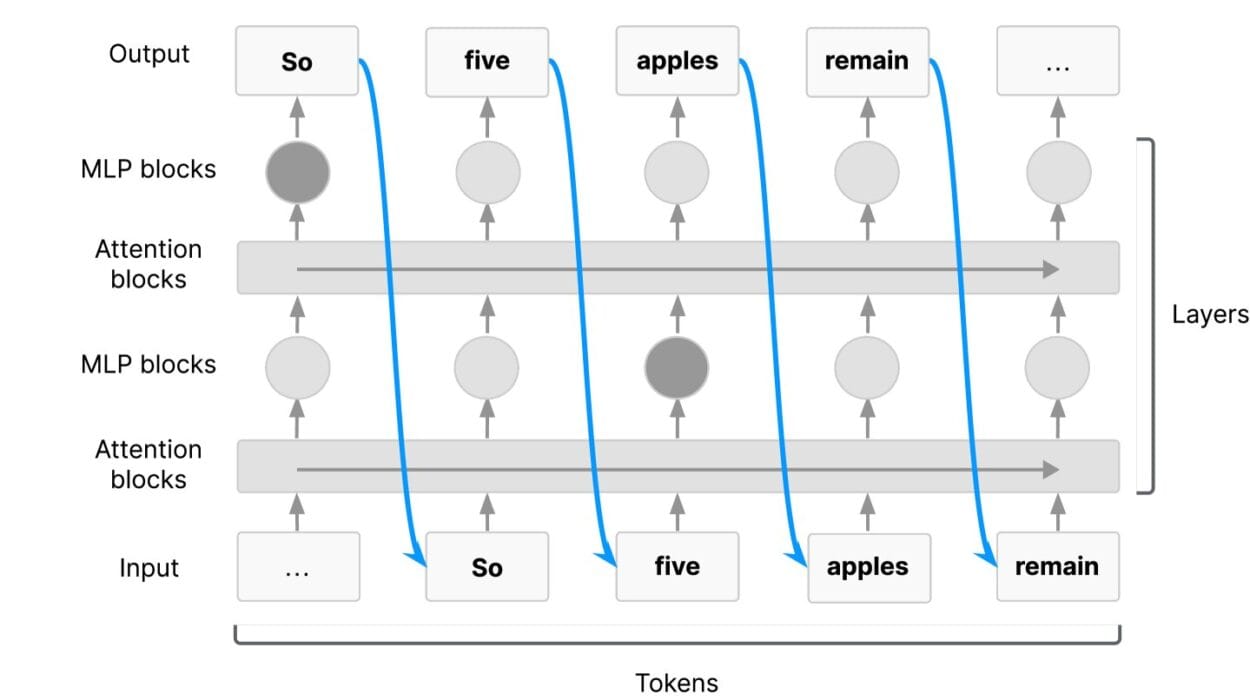Imagine slipping on a sleek headset and stepping into another world—a world sculpted from lines of code but bursting with color, light, and life. You walk through sunlit streets that shimmer like glass. Neon signs flash with animated dragons. Colleagues from three continents stand beside you, discussing business plans as if gathered in the same room. Or perhaps you’re on stage, performing in front of a stadium of roaring fans who are all logging in from home.
This is the dream of the Metaverse—a digital cosmos promising to dissolve the boundaries between the real and the virtual. It’s a vision as exhilarating as it is ambiguous, one that has seduced Silicon Valley and Wall Street alike. The world’s tech titans are betting astronomical sums on this new frontier. But what, precisely, is the Metaverse? And why does it matter so much that companies are gambling their futures on its promise?
To understand this, we must journey through the tangled history of virtual worlds, dive into today’s high-stakes corporate maneuvering, and peek into the possible futures of human experience itself. Because the Metaverse is not merely about technology—it’s about who we are and who we might become.
Genesis of a Word: From Fiction to Silicon Valley
The word Metaverse first materialized on the pages of a novel. In 1992, science fiction author Neal Stephenson unleashed Snow Crash upon the world—a dystopian, cyberpunk epic where humans navigate a digital universe via avatars. In Stephenson’s vision, the Metaverse was a single, shared virtual world, accessed by wearing goggles and plugging into computers.
Back then, it was pure fantasy. But Stephenson’s creation lodged itself into the imagination of a generation of technologists who believed computers could build more than spreadsheets and websites—they could build alternate realities.
By the mid-1990s, pioneers were already crafting primitive virtual spaces. Platforms like Active Worlds and The Palace offered pixelated chat rooms where cartoon avatars mingled. Then came Second Life in 2003, offering sprawling user-created worlds where people could live virtual lives, build houses, sell virtual clothes, and even hold weddings.
Second Life surged, faded, then persisted as a niche community. But its core idea—that humans crave digital spaces that feel real—refused to die.
Fast forward two decades, and technology has caught up to the dream. Faster internet, powerful graphics cards, immersive VR headsets, blockchain economies, and an entire generation raised online have converged into a perfect storm. Suddenly, the Metaverse is not a sci-fi curiosity—it’s a business imperative.
Defining the Indefinable
Ask ten technologists to define the Metaverse, and you’ll receive ten different answers. Is it VR? Is it gaming? Is it social media on steroids? A 3D internet?
At its most fundamental, the Metaverse is an embodied internet—a network of persistent virtual spaces where people can socialize, work, play, and transact as avatars. Unlike today’s apps and websites, which we visit, the Metaverse is a place we inhabit. Instead of swiping a screen, you reach out and touch the digital world.
In theory, the Metaverse would be:
- Persistent: It exists even when you’re not logged in.
- Interoperable: Items and identities can move freely between different virtual worlds.
- Real-time: Millions of users can share experiences simultaneously.
- Economically active: It supports entire economies, where people create, buy, and sell digital goods and services.
- Socially immersive: It offers a feeling of presence far beyond text or video chat.
Yet as grand as this vision sounds, no one has built it in full. What we have now are fragments—a sprawling patchwork of virtual worlds, games, platforms, and fledgling technologies, all vying to become pieces of the coming whole.
The Billion-Dollar Bets
In October 2021, the world’s largest social media company made a seismic announcement. Facebook was renaming itself Meta. CEO Mark Zuckerberg declared that the company’s future lay in the Metaverse—a space “where you’re going to be able to do almost anything you can imagine.”
It was a moment that crystallized a truth lurking beneath the surface: the Metaverse was no longer a hobby project for dreamers. It had become the next great battleground for Big Tech. Meta promised to pour at least $10 billion annually into its Reality Labs division. Analysts estimate Meta’s total Metaverse spend may surpass $100 billion over a decade.
Why such colossal investment?
For Meta, the answer is survival. Facebook, Instagram, and WhatsApp built empires on mobile devices. But as smartphone growth slows and younger generations drift to new platforms, Meta faces an existential question: What comes after the phone? Zuckerberg believes the answer lies in immersive worlds where Meta—not Apple or Google—controls the hardware, software, and virtual economy.
Yet Meta is far from alone. Microsoft has sunk billions into mixed-reality technology, touting its HoloLens headsets and building Mesh, a virtual collaboration platform that blends physical and digital worlds. Google has quietly rekindled its AR ambitions after the early demise of Google Glass. Apple, secretive as ever, is rumored to be preparing AR glasses designed to replace the iPhone itself.
Meanwhile, gaming giants like Epic Games (maker of Fortnite) and Roblox are building thriving virtual ecosystems. Fortnite, once merely a battle-royale shooter, has become a social hub, hosting virtual concerts by Ariana Grande and Travis Scott that drew millions of fans. Roblox offers a vast universe of user-generated games, with its youthful audience spending billions of hours crafting and exploring digital worlds.
Even corporations outside pure tech are circling the Metaverse. Nike, Gucci, and countless fashion brands are experimenting with virtual sneakers and digital couture. JPMorgan Chase opened a virtual bank branch inside Decentraland. Samsung unveiled virtual stores in VR malls.
This is no passing fad. For the companies involved, the Metaverse is potentially the next internet—a new layer of human experience and commerce that could dwarf today’s digital economy.
The Social Web Grows 3D
At its core, the Metaverse is a social phenomenon. Humans are storytelling animals. We long for connection, for places where we can gather and share experiences, even if those places are virtual.
Consider how we’ve evolved from static web pages to social media to video calls. The pandemic, paradoxically, accelerated the hunger for richer digital interactions. In lockdowns, millions flocked to games, virtual events, and online hangouts for a taste of presence.
Platforms like VRChat grew into communities where people sculpt elaborate avatars—foxes, robots, anime characters—and wander vast virtual spaces, chatting with strangers and friends. For some, these worlds are escapes from loneliness, or places to express identities they keep hidden offline.
Meanwhile, younger generations blur the line between physical and virtual lives. Kids growing up in Roblox or Fortnite see these platforms not as “games” but as social hangouts, where they host birthday parties, build fantasy worlds, and explore digital identities.
The Metaverse is simply the logical next step—a spatial internet where our social interactions feel less like browsing and more like living.
The Technology Behind the Dream
Yet dreams require infrastructure. Building the Metaverse demands solving towering technological challenges.
First is the question of hardware. For full immersion, many envision VR headsets delivering realistic 3D environments. Devices like Meta’s Quest series are advancing rapidly, growing lighter, sharper, and more comfortable. But even the best current headsets still strain eyes, induce motion sickness in some users, and remain bulky compared to a pair of glasses.
AR glasses promise a subtler blend of physical and digital worlds, overlaying data onto your surroundings. Imagine walking down the street while virtual arrows guide you to your destination. Apple’s rumored AR headset, along with efforts from Meta, Google, and others, could make such visions real—but battery life, optics, and heat dissipation remain formidable hurdles.
Then there’s connectivity. A seamless Metaverse demands lightning-fast networks capable of handling vast streams of real-time data. 5G and eventually 6G promise the bandwidth necessary for untethered, immersive experiences. But rolling out such networks globally will take years.
Equally crucial is computing power. The Metaverse will require staggering graphics processing, AI-driven environments, and physics simulations to create worlds that feel alive. Companies like Nvidia are investing heavily in “Omniverse” platforms—tools for creating virtual environments at industrial scales.
And then there’s interoperability. Today, digital worlds are walled gardens. Your Fortnite avatar can’t walk into Roblox. Your Meta avatar can’t wear the same clothes in Microsoft Mesh. For the true Metaverse to exist, virtual assets, identities, and currencies must move freely across platforms—an enormous technical and legal challenge.
Finally, there’s content. The Metaverse will live or die on experiences. No one wants to spend hours in a barren 3D lobby. Developers, artists, and everyday users must create compelling worlds, stories, games, and social spaces. The same creative explosion that fueled YouTube and TikTok must happen in 3D.
Economies of the Virtual World
Where people gather, economies emerge. One reason tech giants are pouring money into the Metaverse is the belief that virtual worlds will generate vast new markets.
Already, billions flow through virtual economies. Roblox’s users spend real money on digital clothes and accessories. Fortnite sells skins, dances, and virtual passes. In virtual reality platforms like Rec Room or VRChat, creators can earn income designing avatars and worlds.
And then there’s the controversial world of NFTs—non-fungible tokens. Advocates see NFTs as the bedrock of the Metaverse economy, enabling proof of ownership for virtual items, art, real estate, and digital identities. In 2021, virtual land in platforms like Decentraland and The Sandbox sold for millions of dollars, driven by speculation and belief in a coming digital gold rush.
Skeptics, however, warn that many Metaverse “investments” remain bubbles fueled by hype, with few real users or utility. Virtual land prices fluctuate wildly. Many NFT projects have collapsed, leaving investors holding worthless tokens. The challenge will be transforming speculative booms into sustainable economies where creators and users genuinely benefit.
Yet the potential is undeniable. Imagine attending a virtual fashion show and instantly buying the digital dress for your avatar. Or owning a unique piece of virtual art you can display in a digital home across multiple platforms. In the Metaverse, commerce becomes spatial, experiential, and deeply personal.
Work in the Metaverse
One of the Metaverse’s most intriguing promises lies in transforming how we work.
Picture logging into a virtual office. You sit around a digital table with colleagues from around the globe. Holographic charts float in the air. Avatars gesture, nod, and maintain eye contact. Instead of staring at grids of Zoom faces, you feel truly present.
Microsoft and Meta are pushing hard into this domain. Microsoft Mesh aims to integrate with Teams, offering virtual meetings where avatars share space. Meta’s Horizon Workrooms lets teams collaborate in VR, complete with virtual whiteboards.
Proponents argue the Metaverse can reduce travel, enhance creativity, and combat “Zoom fatigue.” In a virtual space, you can brainstorm with sticky notes floating around your head or prototype 3D products in real time.
Yet skeptics caution that VR remains clunky for long sessions. Wearing a headset for eight hours is hardly practical today. And many jobs simply don’t translate to virtual worlds. For knowledge workers, the Metaverse may offer new collaboration tools, but it will not replace physical offices entirely—at least not soon.
Still, remote work is here to stay. The Metaverse could become a powerful supplement, offering richer ways to connect across distances.
Identity and the Self Reimagined
Beneath the technology, the Metaverse raises profound questions about identity.
In virtual worlds, you can be anyone. A cyborg. A dragon. A genderless sphere of light. You can change your voice, appearance, even your species. For some, this freedom is thrilling—a chance to explore facets of themselves they hide offline. For others, it’s unsettling. If we can become anyone, who are we really?
Psychologists studying VR have found that digital embodiment can alter behavior. People adopt traits associated with their avatars. A tall, confident avatar can make a user feel more assertive. A cute avatar may lead to more prosocial behavior.
As the Metaverse evolves, we’ll grapple with new forms of self-expression—and new risks. Anonymity can breed toxicity. Deepfakes and virtual impersonation could become rampant. Online harassment might follow users into immersive spaces, feeling far more personal when experienced face-to-face in VR.
Regulating identity, privacy, and safety in virtual spaces may prove one of the Metaverse’s greatest challenges.
The Ethical Frontier
Beyond identity, the Metaverse presents a minefield of ethical dilemmas.
Who owns the Metaverse? Will it be dominated by a few tech giants, replicating the monopolies of today’s internet? Or will it be decentralized, built on open standards where users truly own their data and digital goods?
How will privacy be protected in immersive spaces? VR headsets can track eye movements, gestures, and emotional reactions—an unprecedented window into our inner lives. Who controls this data, and how is it used?
There’s also the risk of addiction. Virtual worlds can be seductive, offering escape from hardship or loneliness. Will the Metaverse amplify existing mental health crises? Or could it provide new tools for therapy and connection?
Then there’s the environmental toll. Massive virtual worlds demand vast server farms and computing resources. Will the Metaverse accelerate our carbon footprint, or will companies find sustainable ways to power these digital universes?
The stakes are high. The decisions we make today will shape not only how we play and work—but how we define freedom, privacy, and community in the digital age.
From Hype to Reality
In 2025, the Metaverse remains an unfinished symphony. While dazzling demos and billion-dollar valuations grab headlines, the lived experience often falls short of the dream.
VR headsets still feel cumbersome. Many virtual spaces are sparsely populated, lonely digital echo chambers. Interoperability remains a distant goal. Even Meta has admitted that building a true Metaverse could take a decade—or more.
Yet history suggests we should not underestimate the transformative power of digital spaces. The internet once seemed like a nerd’s toy, destined for academics and hobbyists. Now it defines every aspect of modern life. Social media was once dismissed as frivolous. Today, it shapes elections, economies, and social movements.
If the Metaverse fulfills even a fraction of its potential, it could redefine entertainment, commerce, education, and human relationships. It could offer new tools for creativity, empathy, and connection. Or it could become the ultimate walled garden, where our lives—and wallets—are harvested by corporate overlords.
Which future we inherit remains unwritten.
The Human Story at the Heart of Pixels
In the end, the Metaverse is not truly about technology. It is about humanity’s eternal quest for meaning, connection, and imagination. We have always built alternate worlds—from mythologies to theater to novels to cinema. Each new medium expands our ability to tell stories, to feel presence, to inhabit other selves.
The Metaverse is simply the next chapter in this ancient saga. It’s an invitation to step through the screen and become participants in worlds of our own creation.
As tech giants wage billion-dollar battles to claim this frontier, ordinary people will decide its fate. It is we who will build its cities, sculpt its art, host its concerts, hold its protests, and write its laws. The Metaverse will become what we choose to make it—a place of wonder, or a hall of mirrors.
So the next time you slip on a headset, or explore a digital avatar, remember: the Metaverse is not just code and pixels. It is the reflection of us all—our dreams, our fears, our brilliance, and our flaws.
The frontier awaits.






